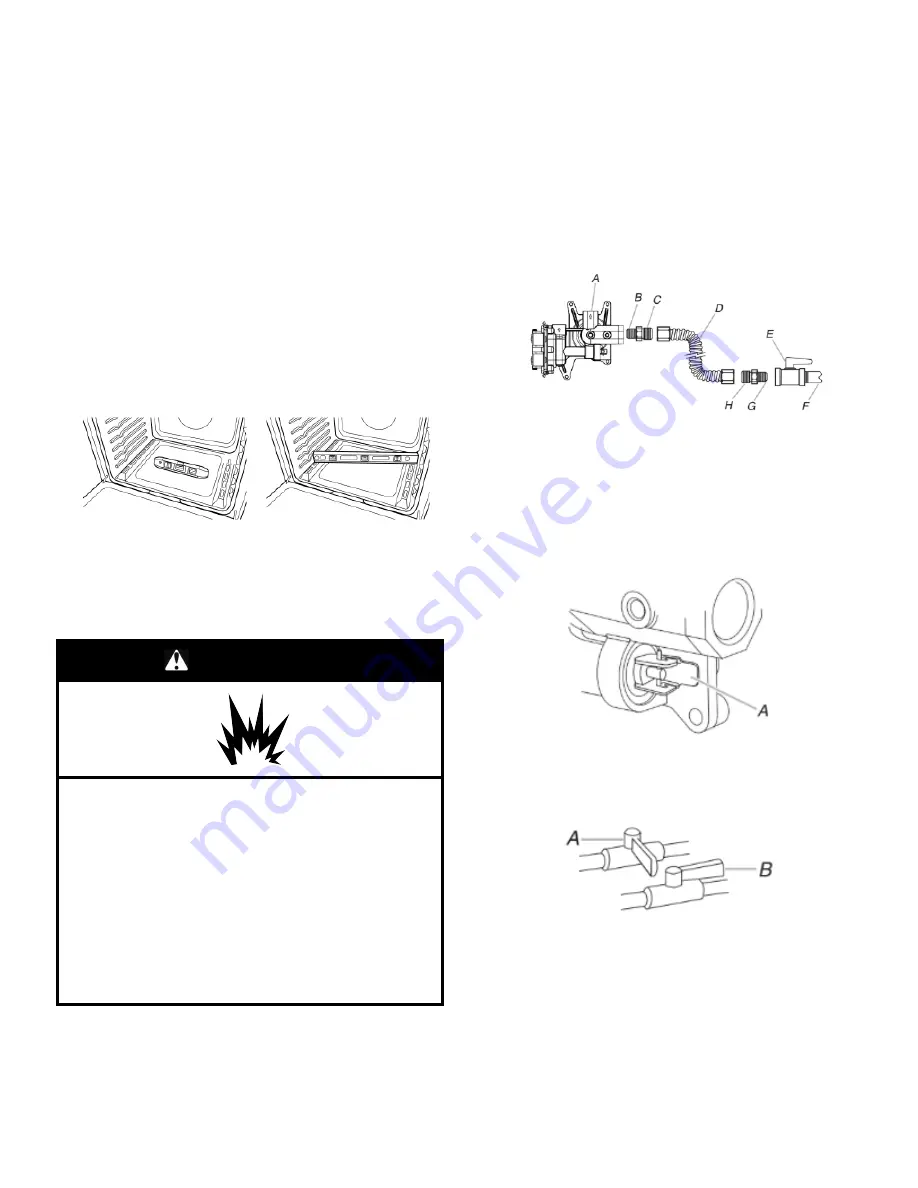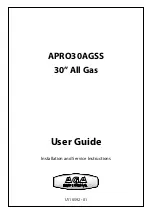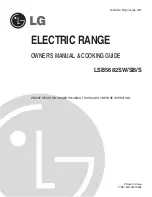
13
3.
Measure the distance from the top of the cooktop to the
bottom of the leveling legs. This distance should be the same.
If it is not, adjust the leveling legs to the correct height. The
leveling legs can be loosened to add up to a maximum of 1"
(2.5 cm). A minimum of 3/16" (5 mm) is needed to engage the
anti-tip bracket.
NOTE:
If height adjustment is made when range is standing,
tilt the range back to adjust the front legs, and then tilt forward
to adjust the rear legs.
4.
When the range is at the correct height, check that there is
adequate clearance under the range for the anti-tip bracket.
Before sliding range into its final location, check that the anti-
tip bracket will slide under the range and onto the rear leveling
leg prior to anti-tip bracket installation.
NOTE:
If a Trim Kit will be used, the top of the cooktop should
be higher than the counter. See the Installation Instructions
included with the Trim Kit for the correct height.
Level Range
1.
Place level on the oven bottom, as indicated in one of the two
figures below, depending on the size of the level. Check with
the level side to side and front to back.
2.
If range is not level, use a wrench or pliers to adjust leveling
legs up or down until the range is level.
NOTE
:
Range must be level for satisfactory baking performance and
best cleaning results using AquaLift
®
Self-Clean Technology.
Make Gas Connection
WARNING
Explosion Hazard
Use a new CSA International approved gas supply line.
Install a shut-off valve.
Securely tighten all gas connections.
If connected to propane, have a qualified person make
sure gas pressure does not exceed 14
ʺ
(36 cm) water
column.
Examples of a qualified person include: licensed heating
personnel, authorized gas company personnel, and
authorized service personnel.
Failure to do so can result in death, explosion, or fire.
This range is factory-set for use with Natural gas. To use this
range with propane gas, see the “Gas Conversions” section
before connecting this range to the gas supply. Gas conversions
from Natural gas to Propane gas or from Propane gas to Natural
gas must be done by a qualified installer.
Typical flexible connection
1.
Apply pipe-joint compound made for use with Propane gas to
the smaller thread ends of the flexible connector adapters (see
B and G in the following illustration).
2.
Attach one adapter to the gas pressure regulator and the other
adapter to the gas shutoff valve. Tighten both adapters, being
certain not to move or turn the gas pressure regulator.
3.
Use a 15/16" (2.4 cm) combination wrench and an adjustable
wrench to attach the flexible connector to the adapters.
IMPORTANT
:
All connections must be wrench-tightened. Do not make
connections to the gas regulator too tight. Making the connections too
tight may crack the regulator and cause a gas leak. Do not allow the
regulator to turn when tightening fittings.
A. Gas pressure regulator
B. Use pipe-joint compound.
C. Adapter (must have 1/2"
(1.3 cm) male pipe thread)
D. Flexible connector
E. Manual gas shutoff valve
F. 1/2" (1.3 cm) or 3/4" (1.9 cm)
gas pipe
G. Use pipe-joint compound.
H. Adapter
Complete Connection
1.
Check that the gas pressure regulator shut-off valve is in the
“on” position.
A. Gas pressure regulator shut-off valve shown in the
“on” position
2.
Open the manual shut-off valve in the gas supply line. The
valve is open when the handle is parallel to the gas pipe.
A. Closed valve
B. Open valve
3.
Test all connections by brushing on an approved noncorrosive
leak-detection solution. If bubbles appear, a leak is indicated.
Correct any leak found.














































